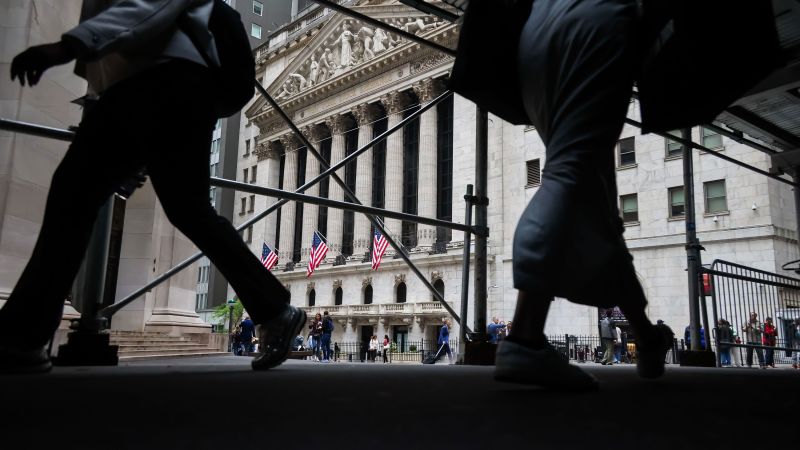The recent downgrade of American debt by Moody’s has sent significant tremors through Wall Street and raised concerns among investors regarding the future of American investments. Following a longstanding AAA credit rating, Moody’s historically altered the United States’ financial standing for the first time since 1917, primarily due to surging national debt levels and a lack of solutions from Washington to address the budget deficit. This news has led to a sharp decline in US stock futures, with the Dow dropping by 350 points (0.8%), the S&P 500 futures decreasing by 1%, and Nasdaq futures plummeting by 1.4%.
The implications of this downgrade are far-reaching. Investors acted quickly, selling off US Treasuries, leading to a rise in the benchmark 10-year yield to 4.5%. In contrast, gold—often viewed as a traditional safe haven—saw an increase of 1.4%, reaching $3,232 per troy ounce. This reflects a broader mood of uncertainty surrounding American assets, compounded by a year characterized by volatility. Initially, the stock market rallied in early 2023 after President Donald Trump’s business-friendly policies sparked investor enthusiasm, propelling stocks to record highs. However, as concerns over Trump’s trade policies grew, apprehension replaced optimism, driving many investors to divest from American assets.
April showed a temporary respite as trade tensions eased, leading to renewed confidence in US stocks and bonds. However, with Moody’s recent downgrade, that confidence appears to be once again wavering. Treasury Secretary Scott Bessent attempted to quell tensions by asserting that Moody’s downgrade was based on outdated information. He echoed sentiments from former Treasury Secretary Janet Yellen, who defended the country’s financial position following a similar downgrade by Fitch Ratings earlier in 2023.
During a Sunday appearance on CNN, Bessent downplayed the significance of the downgrade, insisting it should hold little weight in investors’ decision-making. However, when pressed on concerns regarding Trump’s proposed tax cuts and their potential effect on revenue amid rising national debt, Bessent suggested that the administration’s economic strategy aims to stimulate growth sufficient to lower the debt-to-GDP ratio—currently at 123%, a stark contrast to 92% in 2011 when S&P’s downgrade first occurred.
Despite Bessent’s reassurances, market analysts remain wary. The Moody’s downgrade, according to Chris Rupkey, chief economist at FwdBonds, indicates a troubling trend regarding American financial credibility. The market experienced a sharp decline of nearly 7% following the first downgrade by S&P in 2011, although the reaction to Fitch’s downgrade in 2023 was more subdued. Analysts believe that the current downgrade serves as a critical reminder of America’s unsustainable debt, with Michael Peterson, CEO of the Peter Peterson Foundation, emphasizing that it’s unacceptable for a nation of America’s caliber to weaken its credit rating.
The specter of “sell America” looms over Wall Street, with historical patterns suggesting that adverse reactions to such downgrades can incite panic. Previous trends also indicate that investors have shifted funds away from U.S. stocks and traditional safe havens towards assets like gold and foreign equities during periods of heightened economic uncertainty. For instance, in March, gold prices soared past $3,000 a troy ounce. The volatility in the stock market culminated from earlier fears regarding Trump’s policies and their potential repercussions on the economy.
Presently, investors face additional concerns related to the ongoing trade war and the potential for tariffs to escalate further if trade deals are not reached. Bessent’s remarks indicate a firm stance from the Trump administration regarding negotiations, warning other nations of significant tariff hikes if they do not comply. Such tensions combined with uncertainty surrounding America’s substantial debt could lead to a precarious environment for investors, heightening fears of further market instability.
In summary, the recent downgrade of American debt by Moody’s is an alarming signal for investors and the financial landscape. The mounting national debt and lack of decisive action from Washington are driving investors towards alternative safe havens, while concerns over trade policies continue to proliferate uncertainty. The market’s reaction to these developments may shape the immediate future of American investments and public confidence in the nation’s financial standing.



